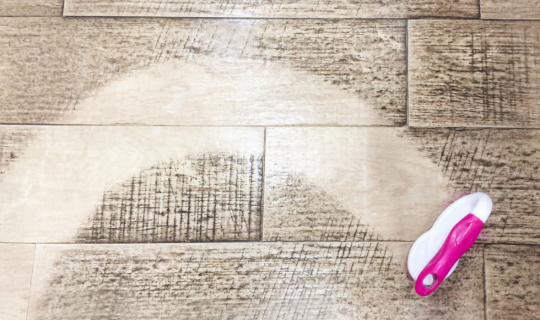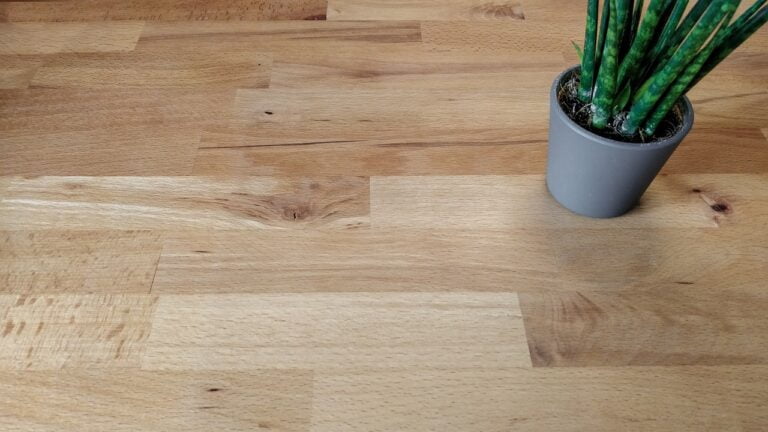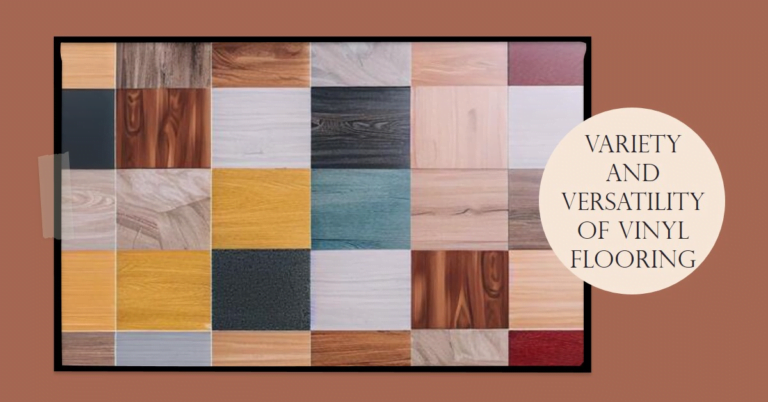How To Fix Vinyl Flooring That Is Lifting
Are you tired of tripping over the edges of your lifting vinyl flooring? Don’t worry, fixing it can be a…
Are you tired of tripping over the edges of your lifting vinyl flooring? Don’t worry, fixing it can be a simple DIY project with the right tools and materials.
In this article, we’ll guide you through the process of identifying the cause of the lifting, preparing your tools and materials, securing the edges, repairing the damaged areas, and maintaining your vinyl flooring to prevent future issues.
The first step in fixing lifting vinyl flooring is identifying the cause. It could be due to moisture, improper installation, or wear and tear.
Once you’ve identified the cause, you can move on to securing the edges and repairing the damaged areas. With a little patience and effort, you can have your vinyl flooring looking as good as new.
So let’s get started!
Identifying the Cause of Lifting Vinyl Flooring
You’re probably wondering what’s causing your flooring to separate from the ground. Let’s take a closer look and see if we can figure it out together.
One of the most common causes of lifting vinyl flooring is moisture. When moisture seeps under the vinyl flooring, it can cause the adhesive to loosen and the flooring to lift. To prevent this from happening, be sure to thoroughly clean up any spills or leaks as soon as possible.
Another common cause of lifting vinyl flooring is improper installation. If the adhesive wasn’t applied correctly or the subfloor wasn’t properly prepared, the flooring may start to separate from the ground. Hiring a professional to install your vinyl flooring can help prevent this issue. Additionally, make sure to follow the manufacturer’s instructions for installation, including proper subfloor preparation and adhesive application.
Finally, heavy foot traffic or dragging heavy objects across the vinyl flooring can also cause it to lift. To prevent this from happening, use furniture pads, avoid wearing shoes with heels, and be careful when moving heavy objects.
With these prevention tips in mind, you can identify the cause of your lifting vinyl flooring and take the appropriate steps to fix it.
Preparing Your Tools and Materials
Before you start, make sure you’ve got all the tools and materials you need to get your floors looking good as new.
When it comes to repairing vinyl flooring, you’ll need a few specific items. First, you’ll need a utility knife or a pair of sharp scissors to cut away any damaged or lifted sections of flooring. You’ll also need a putty knife or scraper to remove any old adhesive or debris from the subfloor. Finally, you’ll need a high-quality adhesive to secure the flooring back in place.
Choosing the right adhesive is crucial when it comes to fixing lifting vinyl flooring. There are a variety of adhesives available, but not all are created equal. Some adhesives are specifically designed for vinyl flooring, while others are more versatile and can be used on a variety of surfaces. Make sure you choose an adhesive that is compatible with your flooring and subfloor. Additionally, some adhesives require a longer drying time than others, so be sure to read the label carefully before making your selection.
Before you can begin repairing your vinyl flooring, you’ll need to remove any old flooring or adhesive that may be causing the lifting. Use your putty knife or scraper to carefully remove any debris or adhesive from the subfloor. Be sure to wear gloves and protective eyewear, as some adhesives can be harsh or contain harmful chemicals.
Once you’ve removed the old adhesive, you’ll be ready to begin repairing the damaged sections of your flooring.
Securing the Lifting Edges
To keep your floors looking smooth and level, it’s important to secure any edges that may be peeling or curling up. This is a common problem with vinyl flooring, but it’s easy to fix with the right tools and materials.
Here’s how to secure the lifting edges of your vinyl flooring:
-
Using adhesives: One of the easiest ways to secure lifting edges is to use a vinyl flooring adhesive. This can be purchased at any hardware or home improvement store. Apply the adhesive to the back of the lifted edge and press it down firmly. Hold it in place for a few minutes until the adhesive sets.
-
Replacing damaged sections: If the lifted edge is damaged beyond repair, you may need to replace that section of the vinyl flooring. To do this, use a utility knife to cut out the damaged section. Then, cut a new piece of vinyl flooring to fit the hole. Apply adhesive to the back of the new piece and press it down firmly. Allow the adhesive to dry completely before walking on the new section.
-
Using double-sided tape: If you don’t want to use adhesive, you can also use double-sided tape to secure the lifting edges. Cut a piece of tape to fit the length of the lifted edge and apply it to the back of the vinyl. Then, press the vinyl down firmly onto the subfloor. Repeat this process for any other lifting edges.
By securing the lifting edges of your vinyl flooring, you can prevent further damage and keep your floors looking great. Just remember to use the right tools and materials for the job, and take your time to ensure a smooth and secure finish. With a little effort, you can fix your vinyl flooring and enjoy beautiful, durable floors for years to come.
Repairing the Damaged Areas
If you’re tired of looking at those unsightly gaps and rough patches on your floors, it’s time to roll up your sleeves and get to work repairing the damaged areas. The first step is to clean the area thoroughly, removing any dirt, dust, or debris. Next, use a putty knife to scrape away any loose or damaged material, such as old adhesive or chunks of vinyl. Once the area is clean and smooth, it’s time to apply adhesive.
When applying adhesive, it’s important to choose the right type for your flooring. Some adhesives are specifically designed for vinyl, while others are suitable for a range of materials. Consult the manufacturer’s instructions or speak to a professional to ensure you’re using the correct product. Apply the adhesive evenly over the damaged area, then press the vinyl firmly into place. Use a roller or a heavy object to smooth out any bumps or air pockets.
Once the adhesive has dried, you can use a seam sealer to fill in any gaps or cracks in the vinyl. This will help to prevent moisture and dirt from getting underneath the flooring, which can cause further damage. Follow the manufacturer’s instructions carefully when using seam sealer, and apply it in thin layers to avoid creating a noticeable buildup. With a little time and effort, you can repair your damaged vinyl flooring and restore it to its former glory.
Maintaining Your Vinyl Flooring to Prevent Future Issues
Maintaining your beautiful vinyl floors is key to preventing any future headaches or costly repairs, so let’s dive into some easy tips to keep them looking as good as new.
First and foremost, make sure to clean your floors regularly using appropriate cleaning techniques. Avoid using harsh chemicals or abrasive materials that could damage the surface of your vinyl flooring. Instead, opt for a gentle cleaner and a soft mop or cloth to wipe away any dirt or spills.
Another important aspect of maintaining your vinyl flooring is to apply a protective coating. This will help to prevent scratches, scuffs, and other types of damage that could occur over time. There are many different types of protective coatings available, so be sure to choose one that is specifically designed for use on vinyl flooring.
Applying a coating will also make it easier to clean your floors in the future, as dirt and grime will be less likely to stick to the surface.
In addition to regular cleaning and applying a protective coating, there are a few other things you can do to maintain your vinyl flooring. For example, be sure to use furniture pads or felt protectors on the legs of your chairs and other furniture to prevent scratches.
Also, avoid wearing high heels or other shoes with sharp or pointed heels that could damage the surface of your floors.
By taking these simple steps, you can keep your vinyl flooring looking beautiful for many years to come.
Conclusion
Overall, fixing lifting vinyl flooring can be a simple process with the right tools and techniques. By identifying the cause of the lifting and preparing your materials, you can ensure that your vinyl flooring remains in good condition for years to come.
Remember to take the necessary precautions when handling any tools or adhesives, and to follow the manufacturer’s instructions for your specific type of vinyl flooring.
With a little patience and effort, you can easily fix any lifting issues and enjoy a beautiful, durable vinyl floor in your home.



